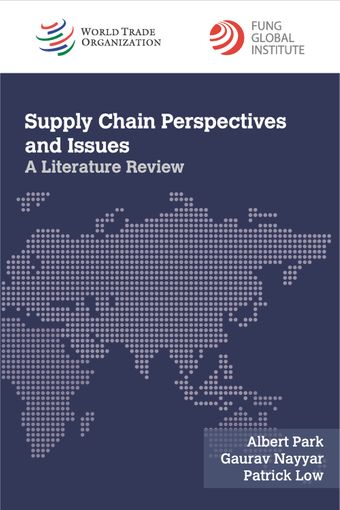Supply chains and trade in value-added

- Authors: Albert Park, Gaurav Nayyar and Patrick Low
- Source: Supply Chain Perspectives and Issues , pp 139-148
- Publication Date: enero 2013
- DOI: https://doi.org/10.30875/eef11d0f-en
- Idioma: Inglés
The increasing importance of global supply chains challenges the way statistics on trade are collected. Statistics on international trade flows are measured in gross terms and, hence, record the value of intermediate inputs traded along the value chain multiple times. Trade in global supply chains can be measured using firm surveys, customs statistics that record trade flows under special schemes of tariff reduction or exemption, or the Standard International Trade Classification (SITC) classifying goods as being intermediate or final. Because of several limitations associated with these methods, however, using input-output tables has become the preferred method for measuring trade in global supply chains. They are used to compute the value of imported inputs embodied in goods that are exported. A more complete measure of a country’s participation in global value chains combines foreign value-added in exports (upstream links) with exports that are incorporated in other products and re-exported (downstream links). Estimates of the ratio of valueadded exports to gross exports suggests that the double counting in gross trade flows, and hence international production sharing, has intensified in recent years, especially for fast growing countries undergoing structural transformation. Relying on national inputoutput tables, however, has its limitations. Combining it with bilateral trade data is difficult because there is no standard international classification, the level of sectoral aggregation is often different and their publication is infrequent. On-going efforts from the international statistics community to estimate trade in value-added go beyond the limitations of the input-output approach.
-
From This Site
/content/books/9789287042354s004-c006dcterms_subject,pub_countryId-contentType:WorkingPaperSeries -contentType:Periodical -contentType:BookSeries -contentType:ReportSeries105


